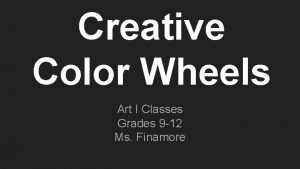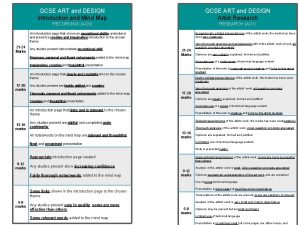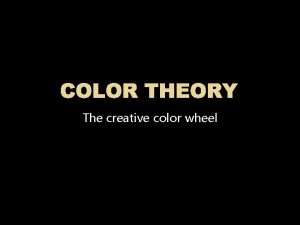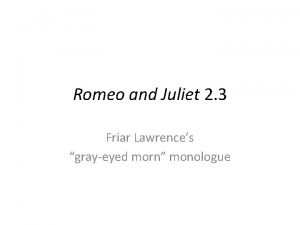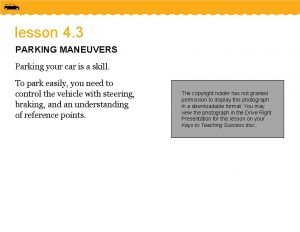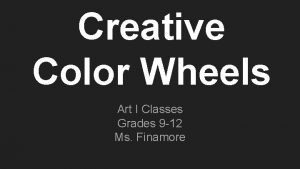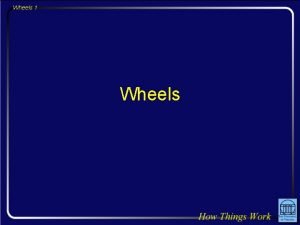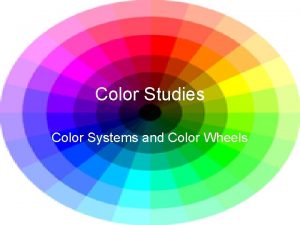Creative Color Wheels Art I Classes Grades 9










- Slides: 10

Creative Color Wheels Art I Classes Grades 9 -12 Ms. Finamore


What is a Color Wheel? • A color wheel is a representation of the relationship between primary colors, secondary, tertiary colors • It also shows which colors are complimentary, and analogous


Color Theory and Terms • Primary Colors: Red, Yellow and Blue are the primary colors. These are three basic colors that are used to mix all hues. • Secondary Colors: Orange, Green and Purple are the secondary colors. They are achieved by mixing two primary colors together. • Tertiary Colors: Tertiary colors are achieved by mixing a primary and a secondary color that are adjacent on the color wheel. • Hue: This is what we usually mean when we ask, "what color is that? "

• Tints, Tones and Shades: If white is added to a color, the lighter version is called a "tint". If the color is made darker by adding black, the result is called a "shade". And if gray is added, each gradation gives you a different "tone. " • Complementary Colors: Colors opposite each other on the color wheel, which create the maximum contrast with one another. • Analogous Colors: Analogous colors sit next to one another on the color wheel. These colors are in harmony with one another.


What we will be doing… PART ONE: Each student will design a color wheel game using Scratch that introduces the basic color theory ideas of Hue, Saturation, Complementary Colors, Analogous Colors, Triadic Colors and Tedratic Colors. The game should be designed in a sequential format covering the listed ideas. PART TWO: We will be making our own individual color wheels utilizing creative shapes. You can use one shape or many, and you can design it however you wish. You can design a traditional circle, or you can make something completely different. You must include the primary, secondary, and tertiary colors. We will eventually be mixing these colors with paint. There are twelve colors in total. PART THREE: Please use the following game at the end of both assignments for assessment - http: //color. method. ac/


Helpful Resources… https: //www. youtube. com/watch? v=Df. Kx 7 Mj. SEK 0 http: //paletton. com/ http: //trycolors. com/ http: //iitg. vlab. co. in/? sub=72&brch=170&sim=1300&cnt=2742
